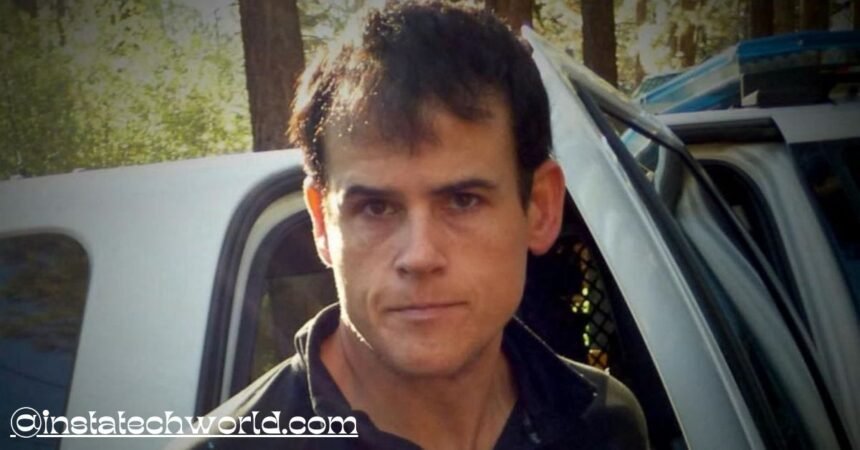Matthew Muller’s rise, crimes, Netflix impact, and life sentences explained in detail. Read now to understand the full story, timeline, and legal fallout.
Matthew Muller is a former Marine and Harvard‑educated attorney whose shocking descent into violent crime—including the infamous “American Nightmare” kidnapping and undercover revelations—has captivated audiences and led to major legal consequences.
This article provides a comprehensive, step‑by‑step exploration of his life, crimes, mental‑health challenges, and the justice that followed.
Matthew Muller – From Achieving Success to Losing Control
Matthew Daniel Muller was born on March 27, 1977, in California. Raised by educated parents—his mother, a teacher, and his father, a wrestling coach and school administrator—Muller excelled academically. He completed his Bachelor’s at Pomona College and went on to earn a Juris Doctor from Harvard Law School. After Harvard, he briefly stayed on as a fellow and a mentor in immigration law.
He then joined the U.S. Marine Corps, serving overseas before being honorably discharged. During his service, he began exhibiting signs of mental illness, including bipolar disorder and schizophrenia, which would later play a key role in his criminal behavior.
Warning Signs – Mental Health Decline and Early Suspicion
By 2008, Muller’s mental health had significantly deteriorated. He experienced delusions—believing he was being surveilled by the government—and paranoia that dramatically impacted his daily life.
In September 2009, he was stopped by police near Stanford University after trespassing under the pretext of being a visiting professor. Soon after, he became connected to a series of escalating incidents rooted in home invasions—crimes that he would later admit to only after years of investigation.
2009 Home Invasions – Confessions and Earliest Pollution of Violence
From September to October 2009, Matthew Muller broke into homes in Mountain View and Palo Alto. He subdued female occupants, forced them to ingest medication, and threatened rape before abruptly fleeing. In one case, he even offered “crime-prevention advice” to his terrified victims.
These attacks went unsolved for over 15 years. Muller’s identity as the perpetrator would emerge only after a Netflix documentary renewed public interest in his crimes—leading to renewed forensic analysis and his eventual confession in January 2025.
The 2015 Vallejo Kidnapping – “American Nightmare” Emerges
The Crime
On March 23, 2015, Muller invaded the Vallejo home of Denise Huskins and Aaron Quinn. He drugged and bound the couple, then abducted Denise to a cabin near South Lake Tahoe. Over 48 hours, he sexually assaulted her multiple times while keeping her blindfolded with goggles, sending ransom threats to Quinn.
Police Mistaken Beliefs
Vallejo Police Department publicly dismissed the incident as a hoax—labeling it “Gone Girl”-style—and subjected Huskins and Quinn to intense and unfair scrutiny.
Breakthrough Detective Work
Detective Misty Carausu of Dublin PD reopened the case during a similar home invasion investigation. She found Huskins’ hair in goggles at the scene, linking Muller to the abduction. This forensic evidence, alongside a phone and laptop left behind, sealed the case.
Arrest
Muller was arrested on June 9, 2015, in a South Lake Tahoe cabin. Investigators found evidence tying him to multiple crimes, initiating a wave of legal actions.
Legal Fallout – Trials, Sentences & Confessions
Federal Charges
In 2016, Muller pleaded guilty to kidnapping and rape charges for the Vallejo assault. In March 2017, he received a 40-year federal prison sentence and was disbarred.
State-Level Proceedings
Following the federal conviction, Muller pleaded no contest in 2018 to California state charges. He received a 31-year concurrent sentence, with forensic psychiatrists diagnosing him as bipolar and schizophrenic .
2009 Crimes Revelations
After the release of Netflix’s “American Nightmare” in January 2024, Seaside Police Chief Nick Borges initiated correspondence with Muller from prison. Under this pressure, he confessed to the two home invasions from 2009. DNA and forensic records confirmed the link, leading to a plea in January 2025.
Two Life Sentences
On March 28, 2025, Santa Clara County Judge Cynthia Sevley handed down two consecutive life sentences for the Mountain View (Sept 29, 2009) and Palo Alto (Oct 18, 2009) invasions. These sentences will begin after Muller’s federal term, expected to start in late 2049.
San Ramon Kidnapping Charges
In January 2025, he was also charged with a separate 2015 kidnapping-for-ransom in San Ramon. Victims, reportedly too fearful to come forward earlier, are now enabling prosecutors to move forward with charges.
The Netflix Effect – “American Nightmare” Sparks Justice
Netflix’s 2024 docuseries played a crucial role in resurrecting cold-case evidence. The series spotlighted Vallejo’s missteps, featuring police skepticism and victim mistreatment . Public reaction was swift—Vallejo PD faced a backlash and eventually issued formal apologies. Hulu’s chief apology came in 2021, and the city later settled the couple’s defamation lawsuit for $2.5 million
Detective Nick Borges later wrote Muller during his sentence, prompting new confessions. The case has since been used as a blueprint for improved crime response and victim treatment across jurisdictions.
Victim Impact and Advocacy
Voices Heard
Denise Huskins, along with women assaulted in 2009, delivered heart-wrenching impact statements in court. Victims detailed lifelong trauma—from sleep disruptions and hypervigilance to PTSD and fear of leaving the house.
A key statement from the Mountain View victim:
“Every single night for five years… I would relive the assault”.
Advocacy Growth
With their voice and platform, Huskins and Quinn now train police departments on compassionate investigation, share their story in media, and lend support to other victims. Their journey from ‘suspected perpetrators’ to survivors‑advocates has transformed policing cultures across California.
Psychological Makeup – The Disorder Behind the Deed
Delusional Vigilantism
Muller viewed himself as a masked savior—“Robin Hood” style—targeting the wealthy to aid the less fortunate. He donned a full-body wetsuit, goggles, dog collars, and wielded toy weapons, all during psychotic episodes in 2015.
Intelligence Meets Instability
His academic brilliance and Marine discipline helped maintain a veneer of normalcy. Yet his untreated mental illness fueled intricate crime planning and execution . Experts argue crimes like these show how unchecked psychiatric disease can be weaponized.
What’s Next? Justice, Prison, and Prevention
Prison Stays
Muller is incarcerated at FCI Tucson serving his 40‑year federal sentence, with release projected for July 2049. Only then will he begin his California life sentences.
Continued Investigation
Law enforcement continues exploring his involvement in earlier crimes—including a 1993 incident when he was a teenager—while new charges from San Ramon press forward.
Systemic Reform
The Muller saga highlights the need for:
- Quicker evidence analysis (DNA backlog)
- Mental health assessment in criminal contexts
- Empathy training for officers
- Victim-first investigation protocols
These reforms aim to prevent future miscarriages of justice and enhance public trust.
FAQs
Who is Matthew Muller?
Matthew Muller is a former Harvard‑educated immigration lawyer and U.S. Marine. Diagnosed with bipolar disorder and schizophrenia, he became infamous for the 2015 Vallejo kidnapping and a wave of earlier violent crimes.
What crimes did he commit?
He:
- Kidnapped and raped Denise Huskins in Vallejo (2015)
- Committed home invasions in Mountain View and Palo Alto (2009)
- Allegedly kidnapped multiple victims in San Ramon (2015)
What sentences is he serving?
Muller has a 40‑year federal sentence for Vallejo, plus concurrent 31‑year state terms. In 2025, he received two consecutive California life sentences for the 2009 crimes, to be served after his federal term in 2049.
How did Netflix influence the case?
Netflix’s “American Nightmare” docuseries (released Jan 17, 2024) revived public attention, led to police apologies, and encouraged detective collaboration—ultimately prompting Muller’s confession to cold-case crimes.
What lasting impact has this case had?
Beyond incarceration, the case has reshaped criminal justice culture—advancing victim-support training, forensic analysis standards, mental‑health considerations, and police accountability reforms.








